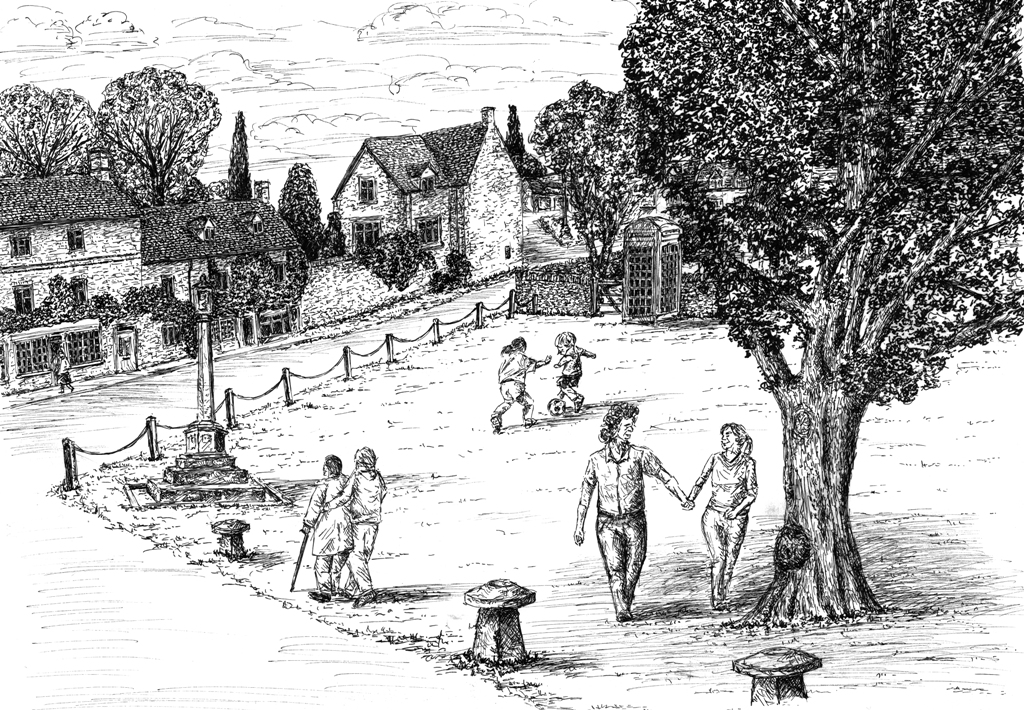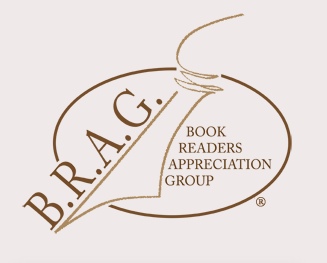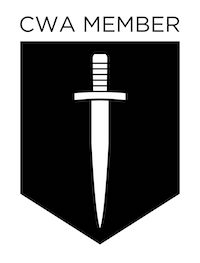 I have two live gigs booked for 2022 and today, I’m about to jet off to the UK for a writers’ retreat, family weekend, then a few days with my critique writing partner. I have two live gigs booked for 2022 and today, I’m about to jet off to the UK for a writers’ retreat, family weekend, then a few days with my critique writing partner.
In previous years, I haven’t thought twice about going on the Internet, booking a plane, booking somewhere to stay, then rolling up to the airport on the given day. Simple!
Alas, no more. Now there is meticulous planning:
- reading up on all the staying-safe-in-time-of-Covid travel regulations
- checking requirements for leaving and re-entering your home country at this time
- ditto for your destination country
- booking Covid test package so you have the code number to fill in on your Passenger Locator Form (see below)
- getting a kind friend to receive said test as it can only be sent to a UK address
- strategies for keeping as safe as possible on public transport and checking the airline for exact type of mask required for the trip
- fulfilling timed requirements like the dreaded Passenger Location Form (You can only do it 48 hours or less before you travel and you wouldn’t believe the detail they want.)
- checking for the millionth time you have your EU vaccination certificate handy amongst PLF, boarding passes, passport, etc. and the gel bottle is full
- as a UK national resident in France, making sure you have your residency card to show with passport on leaving and re-entering France or you get the dreaded stamp with 90 day limit in your passport. (Thank you, Brexit!)
Good fun, eh?
I had already booked a pre-trip PCR test here in France – it’s free even for travel as long as it’s a fortnight after your second Covid jab. The last thing I want to do is unwittingly transmit Covid to people I’m meeting. Mind you, France’s daily case/death figures at 5-6K/low double figures is significantly below those of the UK’s by many times.
But you cannot believe how excited I am at meeting close writing friends IN REAL LIFE!
Zoom, Messenger facebook, Twitter and Skype have been a lifeline over the past two years. Goodness knows how people didn’t lose their wits entirely in plagues and epidemics in the past. But actually standing and sitting in the same room, eating talking and laughing together will be such a treat.
I experienced this when I went to the UK in August and saw my son, daughter-in-law and met my new (15 month old) grandson. I had a wonderful writing time with my critique writing partner for over a week. So I have an inkling of what lies ahead of me today for the next four days.
In 2022, I hope to meet up with tens, even hundreds of people. Let’s hope we’ll all be able to get back to something resembling ‘normal’. It will be tempered by climate considerations, but hopefully the anxiety that has been running in the background for the past two years about the epidemic will have diminished almost to zero. Crossing my fingers…
Alison Morton is the author of Roma Nova thrillers – INCEPTIO, CARINA (novella), PERFIDITAS, SUCCESSIO, AURELIA, NEXUS (novella), INSURRECTIO and RETALIO, and ROMA NOVA EXTRA, a collection of short stories. Audiobooks are available for four of the series.Double Identity, a contemporary conspiracy, starts a new series of thrillers. Double Pursuit, the sequel, is now out!
Find out more about Roma Nova, its origins, stories and heroines and taste world the latest contemporary thriller Double Identity… Download ‘Welcome to Alison Morton’s Thriller Worlds’, a FREE eBook, as a thank you gift when you sign up to Alison’s monthly email newsletter. You’ll also be among the first to know about news and book progress before everybody else, and take part in giveaways.
If you enjoyed this post, do share it with your friends!Like this:Like Loading...
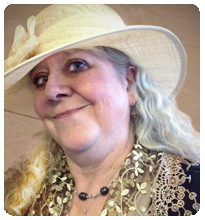 Helen Hollick and her family moved from north-east London in January 2013 after finding an eighteenth-century North Devon farm house through being a ‘victim’ on BBC TV’s popular Escape To The Country show. The thirteen-acre property was the first one she was shown – and it was love at first sight. She enjoys her new rural life, and has a variety of animals on the farm, including hens, ducks, geese, dogs, cats, goats, Exmoor ponies and her daughter’s string of show jumpers. Helen Hollick and her family moved from north-east London in January 2013 after finding an eighteenth-century North Devon farm house through being a ‘victim’ on BBC TV’s popular Escape To The Country show. The thirteen-acre property was the first one she was shown – and it was love at first sight. She enjoys her new rural life, and has a variety of animals on the farm, including hens, ducks, geese, dogs, cats, goats, Exmoor ponies and her daughter’s string of show jumpers.
First accepted for publication by William Heinemann in 1993 – a week after her fortieth birthday – Helen then became a USA Today Bestseller with her historical novel, The Forever Queen (titled A Hollow Crown in the UK) with the sequel, Harold the King (US: I Am The Chosen King) being novels that explore the events that led to the Battle of Hastings in 1066. Her Pendragon’s Banner Trilogy is a fifth-century version of the Arthurian legend, and she also writes a pirate-based nautical adventure/fantasy series, The Sea Witch Voyages. She has contributed to two short story anthologies, 1066 Turned Upside Down and Betrayal.
Despite being impaired by the visual disorder of Glaucoma, she is now branching out into the quick read novella, ‘Cosy Mystery’ genre with her new venture, the Jan Christopher Mysteries, set in the 1970s, with the first in the series, A Mirror Murder, incorporating her often hilarious memories of working for thirteen years as a library assistant.
Her non-fiction books include Pirates: Truth and Tales and Life of A Smuggler. She also runs Discovering Diamonds, a review blog for historical fiction, a news and events blog for her village and the community shop, sometimes assists as ‘secretary for the day’ at her daughter’s regular showjumping shows. Occasionally, she gets time to write…
Welcome back to the writing blog, Helen!
Thank you for inviting me again!
Let’s go back to the ‘the olden days’. What started your fascination with Harold, Arthur and the Saxons? There must be a link between them and also a strong tug from history.
I wrote my Arthurian Trilogy because I couldn’t find the story I wanted to read. This was while I was working as a library assistant in the London suburb town of Chingford during the 1970s. I have never particularly enjoyed the ‘traditional’ tales of King Arthur, I can’t stand Lancelot, could never figure what Guinevere saw in him, and never understood why Arthur didn’t just execute or exile the pair of them – nor why a king in his position would go off and abandon his kingdom. Frankly, the knights are all too ‘goody-goody’ for my taste. (Give me a charmer of a rogue, like my ex-pirate sea captain, Jesamiah Acorne in my nautical Sea Witch series, any day!) Of course, these Medieval tales of Arthur reflect the Medieval way of life, and in particular, the various Crusades. It’s my belief that King Arthur and his knights were a form of marketing to encourage men to take the cross and fight. I must add, I’m not a Norman or Plantagenet fan either, so this might have had some influence.
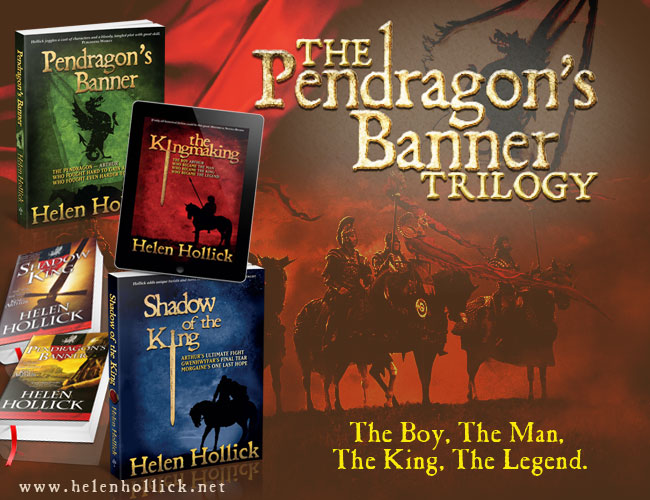 Then I read Mary Stewart’s Crystal Cave and The Hollow Hills – and that was it. Hooked. In her author’s note she mentions that if Arthur had ever existed (I stress the if) it would have been during that period of British history between the going of the Romans and the coming of the Saxons, the mid-400s to early 600s. This made much more sense to me! Then I read Mary Stewart’s Crystal Cave and The Hollow Hills – and that was it. Hooked. In her author’s note she mentions that if Arthur had ever existed (I stress the if) it would have been during that period of British history between the going of the Romans and the coming of the Saxons, the mid-400s to early 600s. This made much more sense to me!
Working in a library meant I had unlimited access to books, so I started researching the end of Roman Britain and the mystery of Arthur. I also delved into the fiction about him and grew more and more dissatisfied. Nothing matched what was expanding as my own thoughts of ‘what might have really happened.’ And then I read Marion Zimmer Bradleys Mists Of Avalon. I know a lot of people love this book, and it is a wonderful story – but oh goodness, did her Guinevere irritate me! To the extent that at one point I threw the book across the room, shouting ‘For goodness sake pull yourself together, you silly woman!”
And that was it. I had to write my own version – my Gwenhwyfar (as I call her) was not a ninny who screamed at everything, but a capable, fiery woman who had a sword and knew how to use it! My Gwenhwyfar and Arthur loved each other but had a turbulent relationship. My Arthur was a proud, capable commander but a man with flaws.
It took me ten years to write what eventually became book one (The Kingmaking) and half of book two, (Pendragon’s Banner). Kingmaking was first published by William Heineman in 1993, and has been printed by various publishers since then – the trilogy is still going strong almost thirty years later.
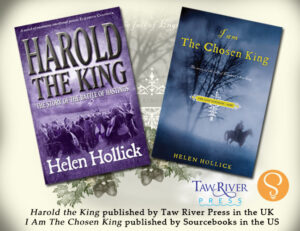 Heinemann then wanted a fourth book. I toyed with several ideas, then two events coincided. I visited near to where I lived then, Waltham Abbey and discovered that Harold of the Battle of Hastings fame founded the original abbey, and also joined a coach trip organised by my mother to visit Hastings and Battle – which is where the battle was fought back in 1066. I had the opportunity to explore the English Heritage site of the battle by myself – the place was deserted because it was raining. (All the ladies on the Townswomen’s Guild coach trip made straight for the cafes and tea rooms.) Heinemann then wanted a fourth book. I toyed with several ideas, then two events coincided. I visited near to where I lived then, Waltham Abbey and discovered that Harold of the Battle of Hastings fame founded the original abbey, and also joined a coach trip organised by my mother to visit Hastings and Battle – which is where the battle was fought back in 1066. I had the opportunity to explore the English Heritage site of the battle by myself – the place was deserted because it was raining. (All the ladies on the Townswomen’s Guild coach trip made straight for the cafes and tea rooms.)
I had such a strong feeling of the past on that battlefield, the distraught echoes from the ghosts of the English… that was it, I had to write Harold’s story, the events that led to that dreadful day of 14th October 1066 when our last English king was butchered by the followers of a usurping psychopathic tyrant. (In case you haven’t realised, I despise Duke William of Normandy! I figure I must have had ancestors there on that battlefield to feel this immense rage against him.)
So Harold the King (UK title – I Am The Chosen King in the US) was published in 2000. Heinemann dropped the title in 2006. I was devastated – but Indie publishing was on the rise. With nothing to prove I embraced the new way of publishing and in September 2021 I am taking the next step and publishing Harold myself under my own Taw River Press logo.
Something dear to my own heart – alternative history. What prompted your idea of an alternative outcome from the events of 1066?
The blame (laugh) lies with author Joanna Courtney. We were both at one of the annual October Battle of Hastings re-enactments, and during a lull between author talks and book signing we started discussing alternative outcomes for the events of 1066. From there, producing an e-book of alternative stories came about. Anna Belfrage, known for her acclaimed timeslip Graham Saga joined us, as did sci-fi writer Richard Dee and highly successful writer of Anglo-Saxon historical fiction (and non-fiction) historian Annie Whitehead, among other known authors.
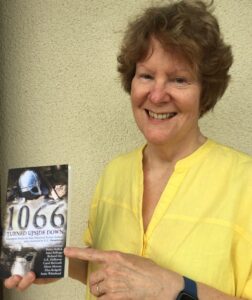 And here it is! I suggested including different authors who were not necessarily connected with straight historical fiction, so you, Alison, came on board with a Roma Nova story – I recall saying to you that if Roma Nova had survived to present day then they must have been involved, somehow, with the events of 1066.
Interrupting… Helen was the one who ‘persuaded’ (dragged me kicking and screaming) into writing a short-ish story, something I’d avoided for years. But she said that as I was an alternative history specialist, I had to take part. Now I regularly write short stories. Thank you, Helen.)
The result is eleven alternative ‘what if’ stories that take us from January to December 1066. As an e-book, it has rarely been out of the Amazon top 100 short story/alternative story lists, but the good news is that we are now also publishing it in paperback. If you go to https://myBook.to/1066TurnedUpsideDown you should be able to find it!
How did a girl from Walthamstow (which I visited recently!) end up in Devon? And what keeps you there?
I love it here in Devon! The air is fresh and pure, our farmhouse, built in 1769, overlooks part of the beautiful Taw Valley. From my study windows I can see trees and fields, the rolling hills on the other side of the valley. Our orchard is laden with fruit, and the bird table (pause to count…) has at least twenty sparrows on it, which alternate with chaffinches, blackbirds, great tits, blue tits, robins, nuthatches… the partially-tame male pheasant was there earlier. I can hear a buzzard calling somewhere. Our geese came up to the veranda a little while ago for their tit-bit breakfast. The three goats are out in their field, along with the horses (we have thirteen acres in all.)
Our nearest neighbour is about quarter-of-a-mile away. Alongside the sound of distant tractors, sheep, cows and owls at night it is always quiet and peaceful. Compared to Walthamstow? A north-east London very busy, nosy, smelly (and litter-strewn) suburban town… no comparison! I escaped. I intend to stay escaped!
We did, literally escape! Frustrated at not being able to find a new place to live I applied to BBC TV’s Escape To The Country. We were accepted and this was the first property they showed us. My daughter and I instantly fell in love with ‘Windfall Farm’ – the alias public name I give to our lovely home.
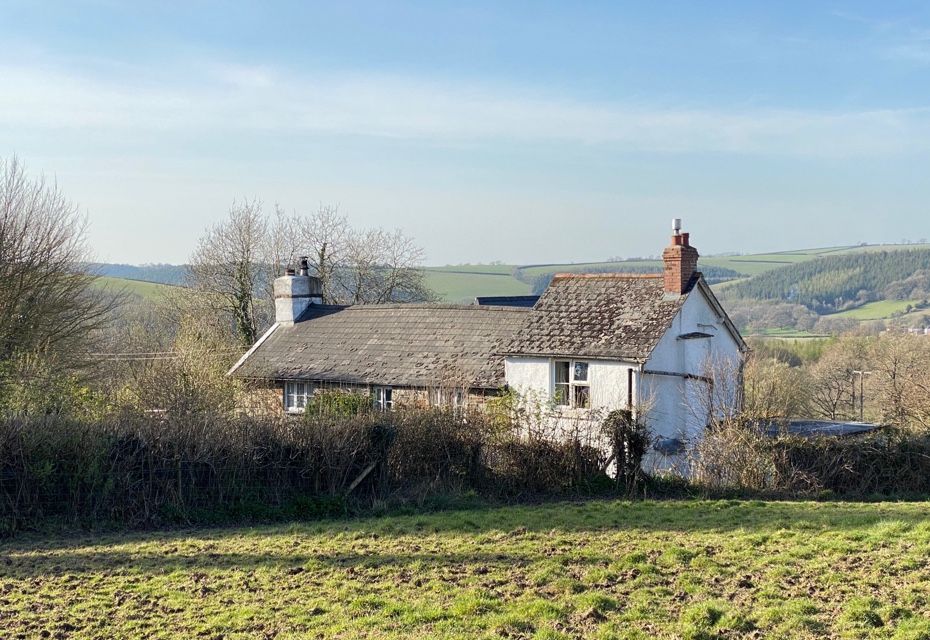
Why windfall? Well, you see, on the opening night of the London Olympics back in 2012 we won the UK National Lottery Raffle. £1,000,000. The money’s mostly gone now as we bought the farm outright, plus a few more horses… But the place is ours. And I love it. I also love our resident ‘guests’. We have several ghosts here, the people of the past who love the place as much as we do.
Now you’ve been changing direction recently, not from your core activity as historical fiction writer and mastermind (mistressmind?) of Discovering Diamonds Reviews, but in the way you’ve been publishing. Tell us more!
When Heinemann (and my ex-agent who let me down by the bucketload) dropped me back in 2006 I sobbed for two weeks, not knowing what to do. Then I picked myself up, brushed myself down (as they say) and decided to go ‘indie’. I found a company which would do all the technical publishing stuff and went for it. As it turned out that particular company’s MD was not as honest as he made out. In 2010/11, after several changes of company name the bailiffs moved in and the company closed. Not before some of the lovely staff (who also didn’t get paid!) had quietly transferred as many files as they could back to the very disappointed authors. I found a different, honest, company (Silverwood Books Ltd) who republished all my books, and now, in 2021 I have plucked up courage to go D.I.Y. (with some help from two very dear friends for the formatting aspect. Thank you both of you!)
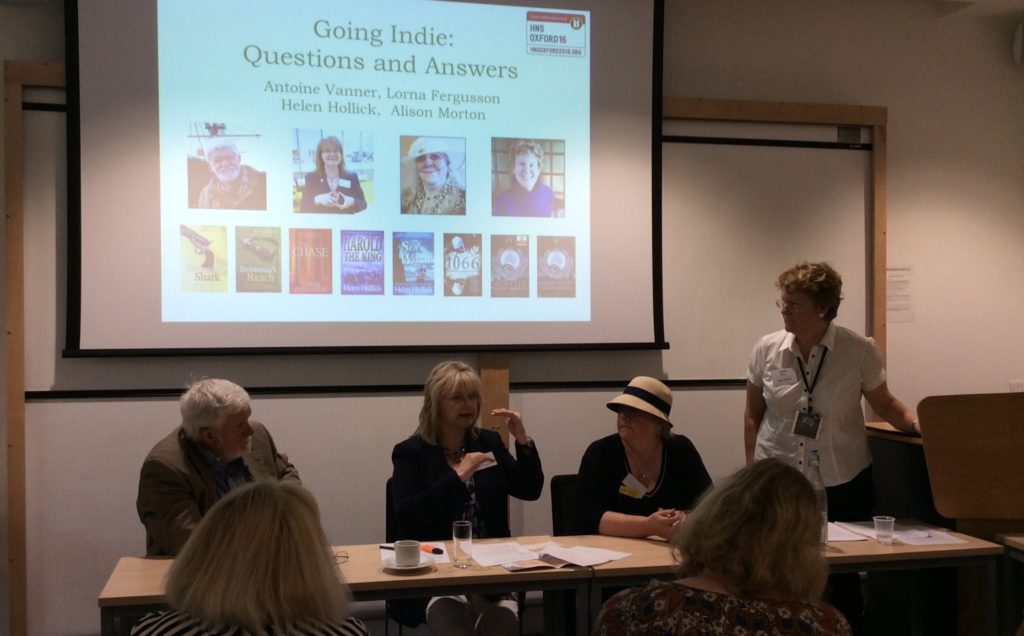 Successful indies all! Antoine Vanner, Laura Fergusson, Helen, Alison These bad experiences of the past were shattering and traumatic BUT I learned a lot about self-publishing/indie very, very quickly. The main ones being how NOT to do it! Check out the company – listen to your head giving warnings, not your heart saying ‘oh, it’ll be ok’. Use a good editor. Use a professional cover designer. Produce your books to the highest possible standard.
You see, there are still far too many literary snobs out there who condemn indie writers as third or even fourth-rate. They are still saying that if a book is good enough to be published a mainstream publisher will pick it up. I’m sorry but that is not the case. Much indie fiction is as good as – even better than – far too many less-than-good traditionally published books. The difference? We indies struggle to market our books. We do not have the financial clout of the ‘big boys’. We can’t pay to have our books noticed on BBC Radio 4 or on the front table at Waterstones, or to have that glowing advert in the top newspapers. We do it all ourselves, and sometimes we feel like giving up because it is hard, hard, hard constant work. Then a lovely e-mail comes in from an enthusiastic reader … and we know why we don’t give up…
Our advantage over mainstream authors who are trapped in their publisher’s requirements is that we can write what we want to write. Want to make a change from historical fiction to a cosy mystery? Just like that (I’m doing a Mary Poppins finger snap!) we do it. And we do it very successfully!
During lockdown I wanted to write something very different – a ‘cosy mystery’, basically, a light-hearted who-dun-it with an amateur sleuth as the main protagonist. For quite a while I had been toying with the idea of how could I use the twelve or so years that I worked in a public library back in the 1970s as a basis for a novel. A Mirror Murder the first in my new Jan Christopher series is the result. Episode 2, A Mystery Of Murder is just out. There will be more…
Connect with Helen
Website: www.helenhollick.net
Blog: www.ofhistoryandkings.blogspot.com
Facebook: www.facebook.com/HelenHollickAuthor
Twitter: https://twitter.com/HelenHollick @HelenHollick
Amazon Author Page (Universal Link) http://viewauthor.at/HelenHollick
Discovering Diamonds Historical Fiction Review Blog :
https://discoveringdiamonds.blogspot.co.uk/
Hot off the press – A Mystery of Murder
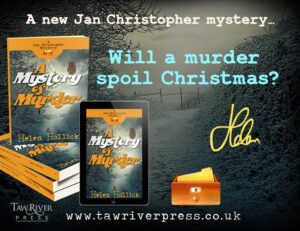
‘Had I known what was to happen soon after we arrived at Mr and Mrs Walker’s lovely old West Country house, my apprehension about spending Christmas in Devon would have dwindled to nothing.’
Library Assistant Jan Christopher is to spend Christmas with her boyfriend, DS Laurie Walker and his family, but when a murder is discovered, followed by a not very accidental accident, the traditional Christmas spirit is somewhat marred…What happened to Laurie’s ex-girlfriend? Where is the vicar’s wife? Who took those old photographs? And will the farmer up the lane ever mend those broken fences?
Set in 1971, this is the second Jan Christopher Cosy Mystery. Join her (and an owl and a teddy bear) in Devon for a Christmas to remember.
Will the discovery of a murder spoil Christmas for Jan Christopher and her boyfriend DS Laurie Walker – or will it bring them closer together?
Available now from Amazon: https://mybook.to/AMysteryOfMurder
Alison Morton is the author of Roma Nova thrillers – INCEPTIO, CARINA (novella), PERFIDITAS, SUCCESSIO, AURELIA, NEXUS (novella), INSURRECTIO and RETALIO, and ROMA NOVA EXTRA, a collection of short stories. Audiobooks are available for four of the series. Double Identity, a contemporary conspiracy, starts a new series of thrillers. Double Pursuit, the sequel is out on 19 October 2021.
Find out more about Roma Nova, its origins, stories and heroines and taste world the latest contemporary thriller Double Identity… Download ‘Welcome to Alison Morton’s Thriller Worlds’, a FREE eBook, as a thank you gift when you sign up to Alison’s monthly email newsletter. You’ll also be among the first to know about news and book progress before everybody else, and take part in giveaways.
If you enjoyed this post, do share it with your friends!Like this:Like Loading...
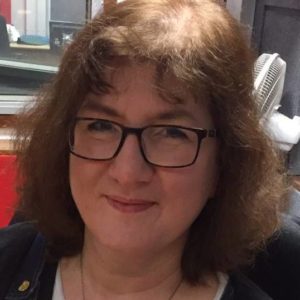 Photo: Dominic Cotter I’m delighted to welcome Debbie Young back to the blog. When I worked it out, I realised we’d known each other for over ten years!
Debbie is the author of nine hilarious, heartwarming mystery novels, two of which were shortlisted for the Selfies Award for Best Independently-published Adult Fiction in the UK (2020 and 2021). She is also a course tutor for Jericho Writers, UK Ambassador for the Alliance of Independent Authors, and the author of various guidebooks and blog posts for authors.
Her fiction is inspired by life in the Cotswold village of Hawkesbury Upton, where she has lived for the last thirty years and by the girls’ boarding school where she worked for thirteen years. She writes in a wooden hut built by her Scottish husband at the bottom of the garden, which she likes to think of as her Little House in the Big Woods, though with fewer bears and a more dependable supply of coffee.
Over to Debbie who is serious about series!
Like most avid readers, I love to discover a good series of books, knowing that each new title I pick up will transport me to familiar territory in the company of characters who feel like old friends (Carina and Aurelia Mitela, I’m looking at you) – or indeed enemies in case of the characters one loves to hate (boo to you, Mr Renschman!). It’s like relaxing in your holiday home rather than exploring new destinations, and in my view, there’s plenty of time for both.
So at the start of my career as a novelist, it was second nature to plan to write not just a novel, Best Murder in Show, but a series of seven – yes, seven! – books. It’s so much easier to revisit a world I’d already created than to have to build new foundations for every book.
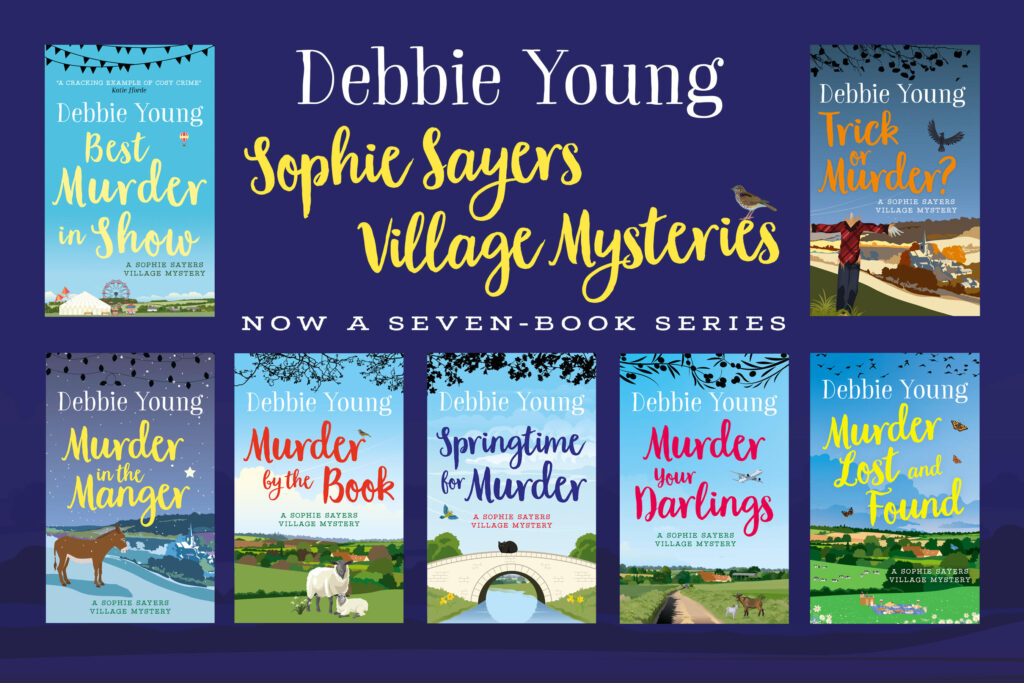
Readers and writers aren’t the only ones who loves series – publishers do too. As with any commodity, it’s easier to sell a new variant of an established, popular product (strawberries-and-cream KitKat, anyone?) than to flog a whole new concept. (What a bold innovation the Curly Wurly was!)
Of course, not all stories lend themselves to series. If a character’s growth and development is completed, resurrecting them beyond “The End” may prove dull. However, in the kind of series that depends purely on action, and in which the characters remain unchanged from start to finish, a series may go on indefinitely. (“The name’s Bond, James Bond…”)
Should a great series therefore never end, or is it better to always leave readers wanting more? Certainly each story should end with closure rather than a cliffhanger. Personally, I’m wary of series that go on for too long. They can lose their edge and their originality. One of my favourite fiction series, which I shan’t name out of respect for the late author, became so contrived after the twelfth book that I stopped reading. I sensed the author also felt it had run its course but was obliged to keep going for her publisher’s sake. Publishers never like to retire golden-egg-laying geese and generally demand a new book each in year in a bestselling series.
One might assume that indie authors like Alison Morton and I might feel under less pressure and therefore publish at their leisure. In my experience, the opposite is true. Without a trade publisher as middleman, we have a very close connection with our readers. As I’m sure is also true for Alison, as soon as I release a new book, readers start asking when the next one will be out. There may be no let-up, but, frankly, it’s a good problem to have, knowing that readers are so enjoying your work.(Too true – Alison)
We have both also both launched additional series, adding to our workloads, Alison’s a new contemporary thriller series kicking off with the gripping Double Identity. After the fifth Sophie Sayers book, I started a second series of novels, then a third of novelettes. This tactic helped to keep my first series fresh.
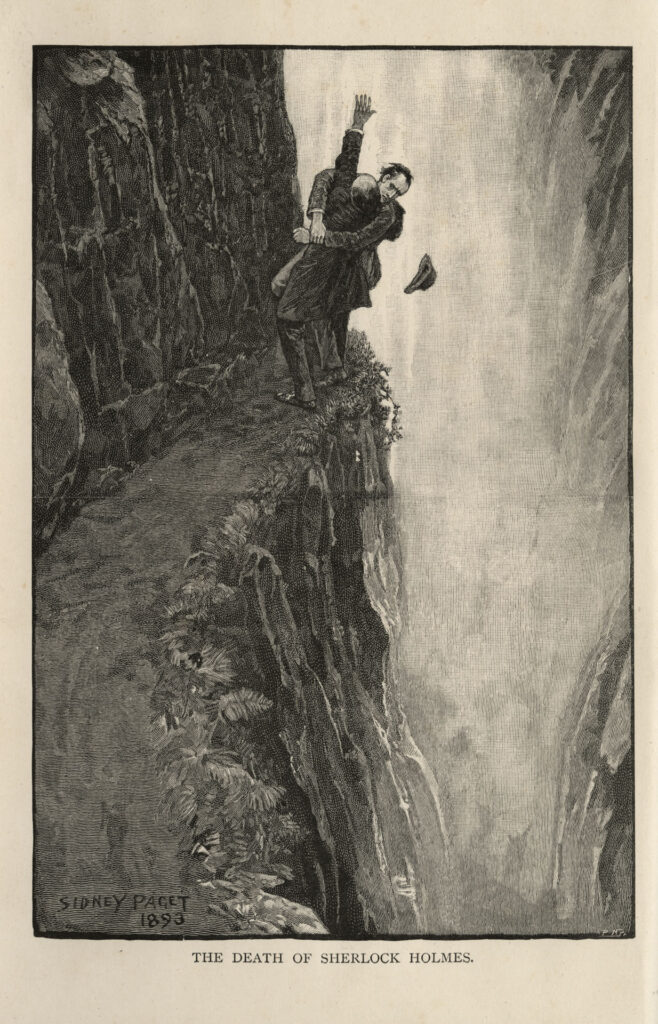 Sherlock Holmes and Professor Moriarty at the Reichenbach Falls, Sidney Paget, The Strand Magazine, December, 1893 (Public domain via Wikimedia) Too many authors end up resenting their leading characters. I didn’t want that to fall into the same trap as Sir Arthur Conan Doyle, who, weary of Sherlock Holmes and desperate to write in other genres, sent his consulting detective on a one-way trip to the Reichenbach Falls, only to have to resuscitate him a few years later for further adventures.
Hats off to Lee Child, who found a different way of escaping from the demands of his protagonist after a 25-year run of annually-published novels. Rather than retiring Jack Reacher, he retired himself, delegating future Reacher novels to his brother, already an author in his own right.
Twenty-five novels – that’s a LOT of books. But how many is too many? And how many books constitutes a series in the first place? Technically, any book with a sequel is a series (a duology), but many authors like to write a trilogy or more. The reason I chose seven for my Sophie Sayers Village Mystery series is that I wanted to chronicle Sophie’s first year in her adopted Cotswold village and needed that many to accommodate the many events of the typical rural year, from one summer to the next.
I’m also a fan of putting an upper limit on a series of novels so that it doesn’t lose its bite, something that is demonstrable in television series. Compare the brilliance of the twelve episodes of “Fawlty Towers”, for example, with the 295 of “Last of the Summer Wine” – apparently an endlessly replenishing bottle of summer wine, like the magic pint of Guinness in the old joke, until the BBC finally pulled the plug after Season 31.
However, I always give the last call to my readers: in response to their protests that Murder Lost and Found should be the final book about Sophie Sayers, I’m now planning an eighth (and final? – the jury is still out!) novel. Sophie also features in my Tales from Wendlebury Barrow series of novelettes, and even puts in a guest appearance in my novels set at St Bride’s School. The eccentric girls’ boarding school of the title is just down the road from Sophie’s village of Wendlebury Barrow. One canny reader even suggested that Sophie join forces with Gemma, the central character at St Bride’s, to solve a mystery together. Clearly there’s more ways than one to keep a series spinning.
My final piece of advice is for readers: if a favourite author sidesteps from your favourite series, follow her and give the new series a chance, even if it’s in a completely different genre. You never know, it could be the start of a whole new addiction.
Words of truth – thank you, Debbie I can’t wait for your next story!
––––––––––
Connect with Debbie
Website: www.authordebbieyoung.com
Twitter: www.twitter.com/DebbieYoungBN
Facebook: www.facebook.com/AuthorDebbieYoung
Instagram: www.instagram.com/DebbieYoungAuthor
––––––––––
Read the first of Debbie’s Sophie Sayers mysteries
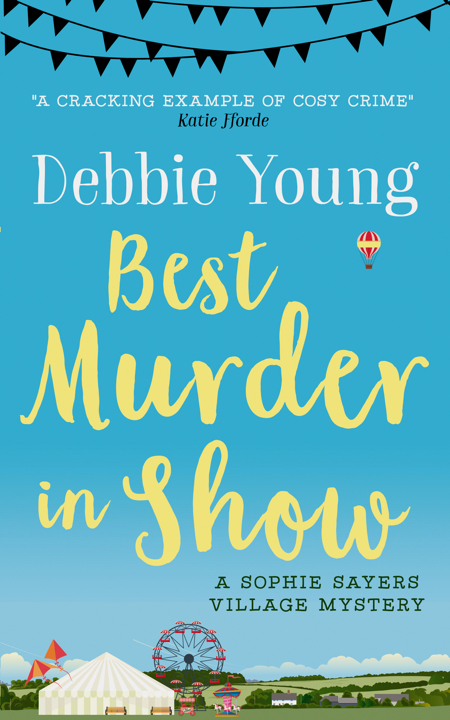 A dead body on a carnival float at the village show A dead body on a carnival float at the village show
A clear case of murder in plain sight, thinks new arrival Sophie Sayers – but why do none of the villagers agree? What dark secrets are they hiding to prevent her unmasking the murderer, and who holds the key to the mystery?
– Hector, the gorgeous but enigmatic owner of the village bookshop
– Joshua, the intrusive yet insightful old man from next door
– Carol, village shopkeeper, the fount of village gossip, not all of it reliable
And what is that mysterious ingredient that almost knocks Sophie out when she takes tea at the village bookshop? (Not the best way to start a job interview.)
Can Sophie unearth the clues tucked away in this outwardly idyllic Cotswold village before anyone else comes to harm, not least herself?
For fans of classic cozy mysteries everywhere, Best Murder in Show will make you laugh out loud at the idiosyncrasies of English country life, and rack your brains to discover the murderer before Sophie can.
Buy this book here
Ebook: https://books2read.com/u/31ryJr
Paperback: https://viewbook.at/BMIS
Alison Morton is the author of Roma Nova thrillers – INCEPTIO, CARINA (novella), PERFIDITAS, SUCCESSIO, AURELIA, NEXUS (novella), INSURRECTIO and RETALIO, and ROMA NOVA EXTRA, a collection of short stories. Audiobooks are available for four of the series. Double Identity, a contemporary conspiracy, starts a new series of thrillers.
Find out more about Roma Nova, its origins, stories and heroines and taste world the latest contemporary thriller Double Identity… Download ‘Welcome to Alison Morton’s Thriller Worlds’, a FREE eBook, as a thank you gift when you sign up to Alison’s monthly email newsletter. You’ll also be among the first to know about news and book progress before everybody else, and take part in giveaways.
If you enjoyed this post, do share it with your friends!Like this:Like Loading...
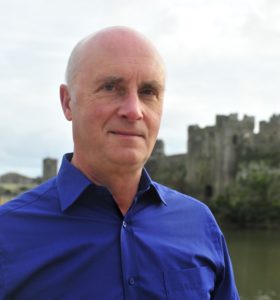 What a question! I’m intrigued about how Tony is going to answer this one… After writing several successful non-fiction books, Tony decided his real interest is in the history of the fifteenth and sixteenth centuries, and now his focus is on writing historical fiction about the lives of key figures of medieval history. What a question! I’m intrigued about how Tony is going to answer this one… After writing several successful non-fiction books, Tony decided his real interest is in the history of the fifteenth and sixteenth centuries, and now his focus is on writing historical fiction about the lives of key figures of medieval history.
His Tudor Trilogy has become an international best-seller and he is in regular demand as a guest speaker about the lives of the early Tudors. This was followed by his Brandon trilogy, about Charles Brandon, his life, career and his complex marriages including with Mary Tudor, princess of England and Queen of France.
Tony’s blog, The Writing Desk, has well over a million visitors, and his popular podcast, Stories of the Tudors has had over 90,000 downloads. Tony returned to Pembrokeshire, an area full of inspiration for his writing, where he lives with his wife. In his spare time he enjoys sailing and sea kayaking.
Over to Tony!
I was born in Pembroke, not far from the impressive castle which was the birthplace of Henry VII, the first Tudor king. I couldn’t find any well researched novels about his life, so began collecting primary sources, and soon found I had enough material for at least three books. These became my Tudor trilogy, with Henry born in the first book, coming of age in the second, and becoming King of England in the third.
The trilogy became a best-selling series in the US, UK and Australia. Then came a series of questionable television dramas. These took liberties with the facts (like ‘merging’ Henry VIII’s sisters), and it was much the same when I studied history at school. I remember how we went straight to Henry VIII and his unlucky wives – then on to Elizabeth I seeing off the Spanish Armada.

I can understand anyone who suggests authors should avoid the Tudors as they’ve already had more than enough attention. When I began my research, however, I soon discovered the wealth of information which will be new to all but the most well-informed readers.
Writers such as C J Sansom, with his Shardlake series, and Hilary Mantel’s Wolf Hall trilogy inspired me to really thing about the world of the Tudors. I decided to follow the Tudor trilogy with a ‘sequel’ which explored the less well known but fascinating life of Henry VIII’s youngest sister, Mary, who became Queen of France and risked everything to marry Charles Brandon, Duke of Suffolk.
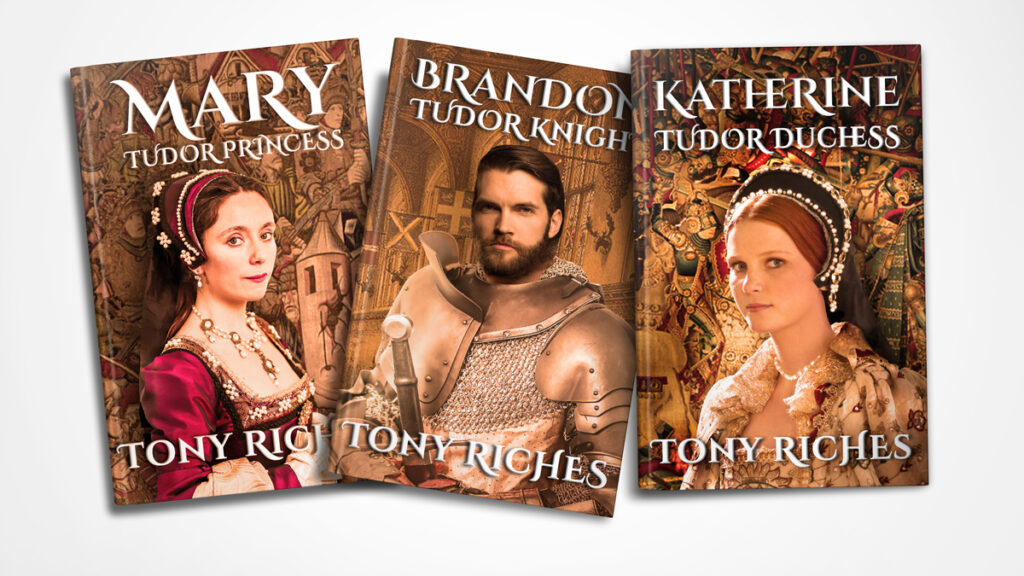
This led to my popular Brandon trilogy, and visits to the actual locations in Suffolk and Lincolnshire. A particularly poignant moment was when I visited St George’s Chapel in Windsor Castle and saw Brandon’s tomb. I was also able to visit Grimsthorpe Castle, where he lived with his last wife, Katherine Willoughby and see the famous portraits of them side by side.
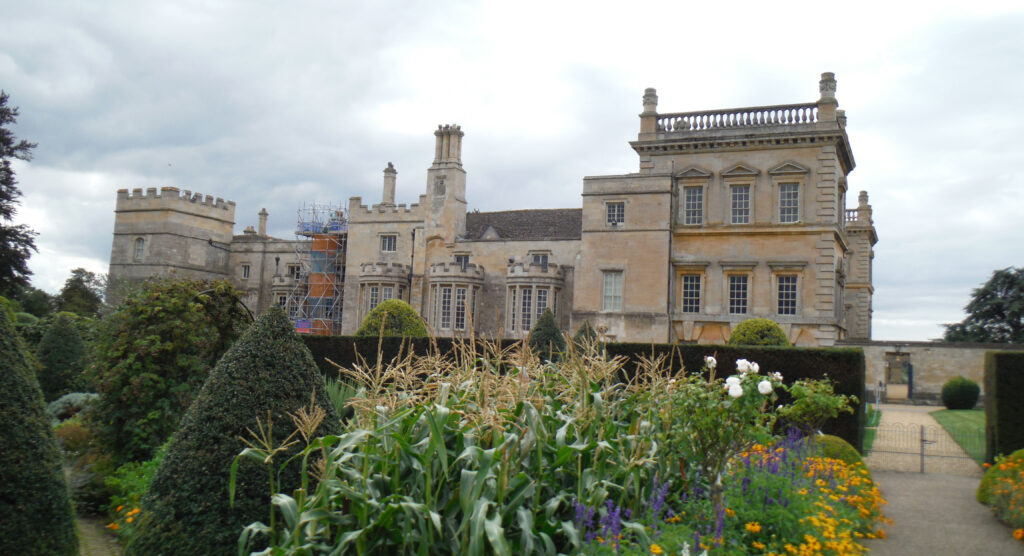 Grimsthorpe Castle I realised my books provided a continuous line, telling the stories of the Tudors from Owen Tudor’s first meeting with Queen Catherine of Valois. I’m now working on an Elizabethan series, which will bring the intriguing world of the last Tudor queen to life.
––––––––
For more information about Tony, do visit his website tonyriches.com and his blog The Writing Desk.
You can find him on Facebook and Twitter @tonyriches
––––––––
Read Tony’s latest about Robert Devereux, Earl of Essex
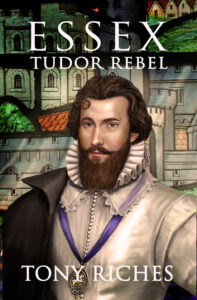
Robert Devereux, Earl of Essex, is one of the most intriguing men of the Elizabethan period. Tall and handsome, he soon becomes a ‘favourite’ at court, so close to the queen many wonder if they are lovers.
The truth is far more complex, as each has what the other yearns for. Robert Devereux longs for recognition, wealth and influence. His flamboyant naïveté amuses the ageing Queen Elizabeth, like the son she never had, and his vitality makes her feel young.
Robert Devereux’s remarkable true story continues the epic tale of the rise of the Tudors, which began with the best-selling Tudor trilogy and concludes with the reign of Queen Elizabeth I.
Buy from Amazon: US UK Canada Australia
Alison Morton is the author of Roma Nova thrillers – INCEPTIO, CARINA (novella), PERFIDITAS, SUCCESSIO, AURELIA, NEXUS (novella), INSURRECTIO and RETALIO, and ROMA NOVA EXTRA, a collection of short stories. Audiobooks are available for four of the series. Double Identity, a contemporary conspiracy, starts a new series of thrillers.
Find out more about Roma Nova, its origins, stories and heroines and taste world the latest contemporary thriller Double Identity… Download ‘Welcome to Alison Morton’s Thriller Worlds’, a FREE eBook, as a thank you gift when you sign up to Alison’s monthly email newsletter. You’ll also be among the first to know about news and book progress before everybody else, and take part in giveaways.
If you enjoyed this post, do share it with your friends!Like this:Like Loading...
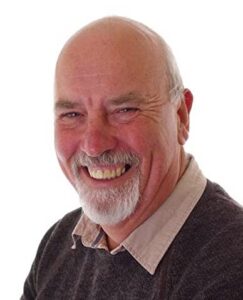 I’m delighted to welcome the return of David Ebsworth to the blog as this week’s ‘writer abroad’. DAVID EBSWORTH is the pen name of writer Dave McCall, a former organiser for Britain’s Transport & General Workers’ Union. He was born in Liverpool but now lives in Wrexham, North Wales, and in Alicante, Spain. David took up writing historical fiction full-time after his retirement and ‘A Betrayal of Heroes’ is his tenth novel. I’m delighted to welcome the return of David Ebsworth to the blog as this week’s ‘writer abroad’. DAVID EBSWORTH is the pen name of writer Dave McCall, a former organiser for Britain’s Transport & General Workers’ Union. He was born in Liverpool but now lives in Wrexham, North Wales, and in Alicante, Spain. David took up writing historical fiction full-time after his retirement and ‘A Betrayal of Heroes’ is his tenth novel.
Here he explains how he weaves the research for his novels, keeping his fiction within the limits of historical veracity and maintaining the balance between providing enough background to show all the necessary colour, yet not so much that it causes information dump.
Over to David!
Remember the Marseillaise scene from Casablanca?
Rick’s Café Américain. The Germans down below singing Die Wacht am Rhein. The conflicted faces of the bar’s French and refugee customers. Victor Laszlo’s defiant instruction to the band. “Play the Marseillaise. Play it!” And the band members looking up towards Rick, on the balcony above. Rick’s simple nod of agreement, worth more than a thousand words of dialogue and descriptive setting. The reaction of those onlookers, the trembling voices as they begin to sing the anthem. Their pride, the tears, the tragedy of France under the Nazi jackboot, the determination to be free once more. All captured in one brilliant scene. (You can watch the scene from the film here.)
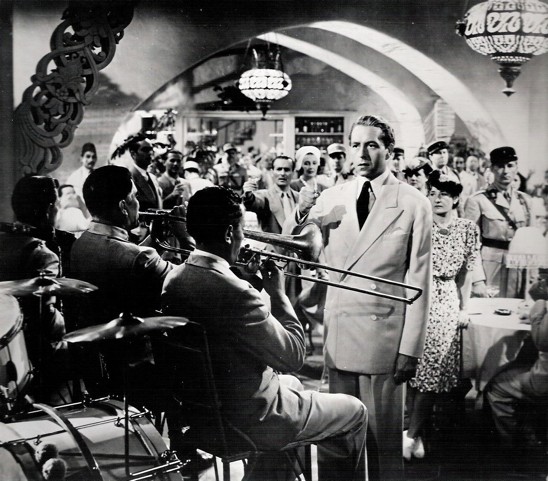
Brilliance to which I can only aspire.
Yet, in my own way, it’s just how I try to write historical fiction. The protagonist’s story, the attitudes and events driving my main characters, the reactions of supporting players, the settings, must be specific to the age in which the novel’s set and themselves part of the story.
And it’s no coincidence that I chose the Casablanca scene to illustrate this point about holistic research.
My third Jack Telford novel, A Betrayal of Heroes, is published this month (14th July). I had to build a timeline for the relevant history thread from 1939 until 1945, and mainly – from 1940 onwards – the story of Free France. Then to research and plot Jack’s travels and trials through that history. From Casablanca itself to Brazzaville, from the beaches of Normandy to the Liberation of Paris.
This is also the story of Spanish Republican soldiers who, having survived their own civil war, went on to serve within the ranks of the Free French army, to continue their fight against fascism and Europe’s Nazis until the end of the Second World War. I’ve many personal connections to the Spanish Civil War. But I think of myself as an amateur Francophile, as well. So, here – a perfect storm. Spain, its civil war and the fight for the Liberation of France – all rolled into one yarn.
Telford, my protagonist, must survive in wartime North Africa. He must abandon his old life as a Sunday newspaper journalist to take up a new role as a war correspondent. And he must adapt to life with the military, a section of Leclerc’s Free French army.
It’s fairly easy to build accurate scenes of Europe during the Second World War. But Oran? Rabat? Brazzaville? The towns of Chad? It was getting to be a struggle, until I stumbled across the archive of maps in the University of Texas Libraries. These are detailed street maps produced in 1942 by the US Army Map Service for every major city in North Africa. Those maps led me to a similar cache of plans for the towns and cities of Gabon, the French Congo, Chad and so on. And from those maps I was able to construct the realistic settings for Jack Telford and his associates to populate.
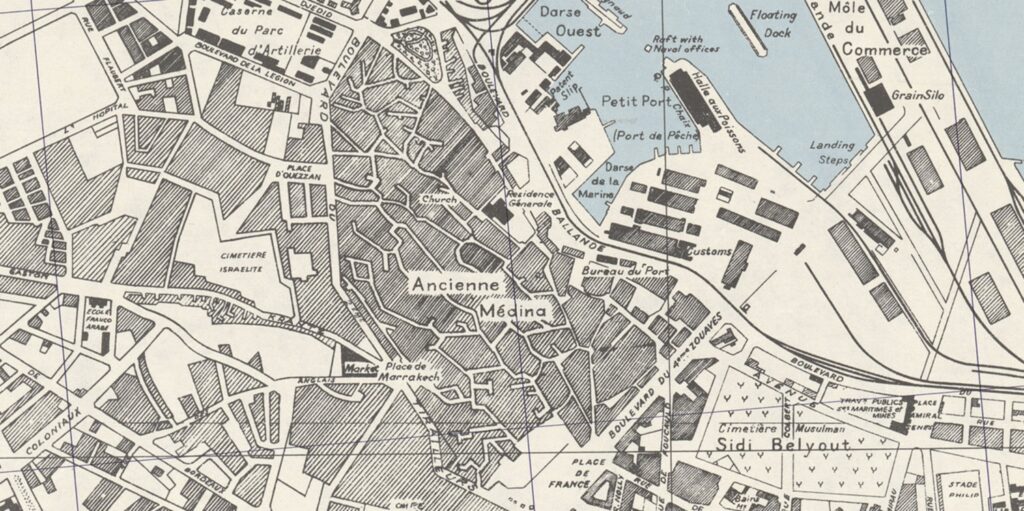
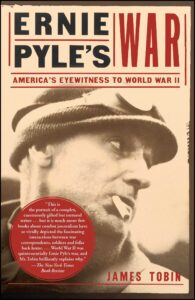 For Jack’s career development, I studied the Second World War’s frontline journalists, men and women, so I could “teach” Jack how to be a war correspondent. I especially liked the work of American Pulitzer Prize-winning Ernie Pyle. I fell in love with Ernie Pyle’s writing – but it wasn’t Jack. And then I came across another winner of the Pulitzer for his war correspondence, Hal Boyle. I picked up a collection of Boyle’s writings, almost essays, almost Alastair Cooke. For Jack’s career development, I studied the Second World War’s frontline journalists, men and women, so I could “teach” Jack how to be a war correspondent. I especially liked the work of American Pulitzer Prize-winning Ernie Pyle. I fell in love with Ernie Pyle’s writing – but it wasn’t Jack. And then I came across another winner of the Pulitzer for his war correspondence, Hal Boyle. I picked up a collection of Boyle’s writings, almost essays, almost Alastair Cooke.
From these I was able to build and research what, I hope, are credible pieces of journalism – Jack Telford’s own words but in the style of Hal Boyle.
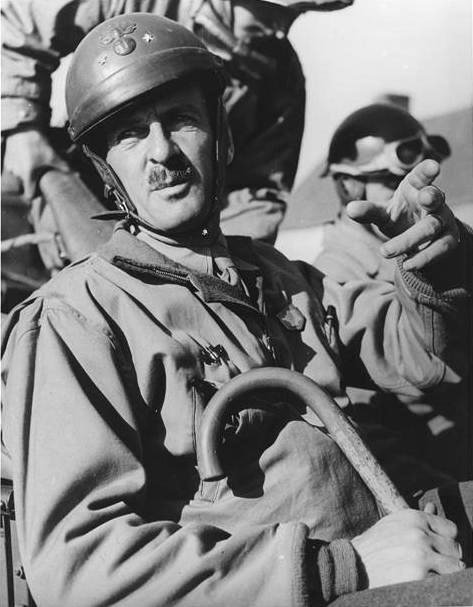 General Philippe Leclerc de Hauteclocque (Photo: John Downey, US Office of War Information, public domain) Finally, Jack and the military. He has to live and breathe among the men and women of Leclerc’s 2nd French Armoured Division for almost eighteen months. And, before that, with Leclerc’s flying columns in Libya – units a bit like the Long Range Desert Group.
Naturally, there were endless non-fiction histories and autobiographies for the period. But I learned so much more from another lucky find. Robert S. Coale – Bob Coale – is Professor of Hispanic Studies at the University of Rouen. And Bob – with his encyclopaedic knowledge of Leclerc’s Division and the former Spanish Republican soldiers who fought within its ranks – helped to steer me through the learning curve.
There we have it. Just a few of our journeys to build and research a credible background while writing A Betrayal of Heroes. I just hope folk enjoy reading it as much as I loved the writing. Vive la France!
—————
Find out more about David
Website and blog: https://www.davidebsworth.com/
Facebook: https://www.facebook.com/EbsworthDavid
Twitter: https://twitter.com/EbsworthDavid @EbsworthDavid
—————
Read A Betrayal of Heroes
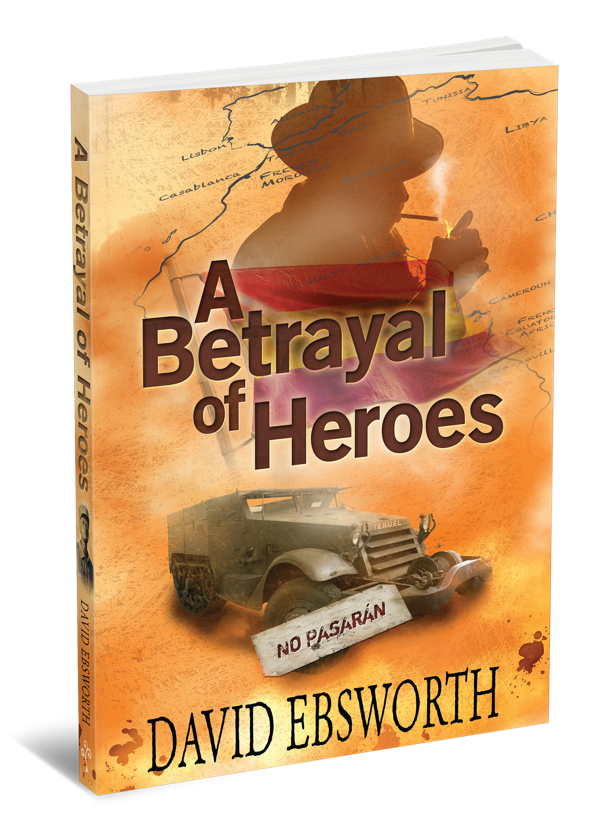 ‘Swear,’ Leclerc shouted, ‘that you will never lay down your arms until our colours, our beautiful colours, are flying afresh on Strasbourg Cathedral!‘ ‘Swear,’ Leclerc shouted, ‘that you will never lay down your arms until our colours, our beautiful colours, are flying afresh on Strasbourg Cathedral!‘
Headstrong newspaperman Jack Telford’s weapon is his pen, but the oath he’s taken at Kufra will still bind his fate to the passions and perils of the men and women who shape his life – his personal heroes, like the exiled Spanish Republicans now fighting for Free France.
But from Oran and Casablanca to the heart of Africa, then into the cauldron of Normandy and the Liberation of Paris, Jack’s fate is also bound to those who will betray them, and to the enemies who want Telford dead.
Buy this book from a wide variety of retailers:
https://www.davidebsworth.com/portfolio/betrayal-of-heroes
—————
This is the last of the ‘writers abroad’ series and it’s a storming one to end on! But there are more guests in the pipeline…
Alison Morton is the author of Roma Nova thrillers – INCEPTIO, CARINA (novella), PERFIDITAS, SUCCESSIO, AURELIA, NEXUS (novella), INSURRECTIO and RETALIO, and ROMA NOVA EXTRA, a collection of short stories. Audiobooks are available for four of the series. Double Identity, a contemporary conspiracy, starts a new series of thrillers.
Find out more about Roma Nova, its origins, stories and heroines and taste world the latest contemporary thriller Double Identity… Download ‘Welcome to Alison Morton’s Thriller Worlds’, a FREE eBook, as a thank you gift when you sign up to Alison’s monthly email newsletter. You’ll also be among the first to know about news and book progress before everybody else, and take part in giveaways.
If you enjoyed this post, do share it with your friends!Like this:Like Loading...
|
Subscribe to Blog via Email
Join 368 other subscribers.
Categories
Archive
|
 I have two live gigs booked for 2022 and today, I’m about to jet off to the UK for a writers’ retreat, family weekend, then a few days with my critique writing partner.
I have two live gigs booked for 2022 and today, I’m about to jet off to the UK for a writers’ retreat, family weekend, then a few days with my critique writing partner.









